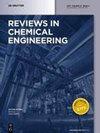利用纳米多孔吸附剂和光催化剂处理水和废水中的卡马西平及其他结构相关药物:综述
IF 6.6
3区 工程技术
Q1 ENGINEERING, CHEMICAL
引用次数: 0
摘要
卡马西平(CBZ)是一种新出现的污染物,在水和废水中具有持久性。在低浓度的情况下,长期接触含有 CBZ 的水会对人体健康造成不利影响,还可能对环境产生负面影响。在此,我们对降低水和废水中 CBZ 浓度的新处理方法进行了深入探讨。首先,我们总结了 CBZ 在水生环境中的转化途径,并确定了相应的产物。然后,我们介绍了通过光转化、生物转化和吸附过程去除 CBZ 和结构相关药物的方法,重点介绍了源自天然和生物的纳米多孔吸附剂的应用,如农业废弃物、天然聚合物、活性炭、金属有机框架、硅和分子印迹聚合物。生物活性炭对 CBZ 的吸附能力最高,主要通过疏水和 π-π 相互作用进行吸附。二氧化钛和其他无机光催化剂也能有效处理 CBZ。本综述不仅对最先进的 CBZ 及其结构相关药物的吸附和降解过程进行了重要综述,还提出了知识差距和未来的研究方向。本文章由计算机程序翻译,如有差异,请以英文原文为准。
Treatment of carbamazepine and other structurally-related pharmaceuticals in water and wastewater by nanoporous adsorbents and photocatalysts: a critical review
Carbamazepine (CBZ) is a contaminant of emerging concern that is persistent in water and wastewater. At low concentrations, prolonged exposure to CBZ-containing water causes detrimental health effects to humans and may also have negative impacts on the environment. Here we critically review new treatment approaches to decrease CBZ concentrations in water and wastewater. First, we summarize the transformation pathways of CBZ in the aquatic environment and identify the corresponding products. Then, we describe the removal of CBZ and structurally-related pharmaceuticals by phototransformation, biotransformation, and adsorption processes, with an emphasis on the application of naturally- and biologically-derived nanoporous adsorbents, such as agricultural wastes, natural polymers, activated carbon, metal organic frameworks, silicas, and molecularly imprinted polymers. Biologically-derived activated carbons exhibited the highest adsorption capacities for CBZ, with adsorption predominantly occurring through hydrophobic and π–π interactions. CBZ was also effectively treated using titanium dioxide and other inorganic photocatalysts. This review not only provides a critical synthesis of state-of-the-art adsorption and degradation processes for CBZ and structurally-related pharmaceuticals, but also proposes knowledge gaps and future research directions.
求助全文
通过发布文献求助,成功后即可免费获取论文全文。
去求助
来源期刊

Reviews in Chemical Engineering
工程技术-工程:化工
CiteScore
12.30
自引率
0.00%
发文量
37
审稿时长
6 months
期刊介绍:
Reviews in Chemical Engineering publishes authoritative review articles on all aspects of the broad field of chemical engineering and applied chemistry. Its aim is to develop new insights and understanding and to promote interest and research activity in chemical engineering, as well as the application of new developments in these areas. The bimonthly journal publishes peer-reviewed articles by leading chemical engineers, applied scientists and mathematicians. The broad interest today in solutions through chemistry to some of the world’s most challenging problems ensures that Reviews in Chemical Engineering will play a significant role in the growth of the field as a whole.
 求助内容:
求助内容: 应助结果提醒方式:
应助结果提醒方式:


